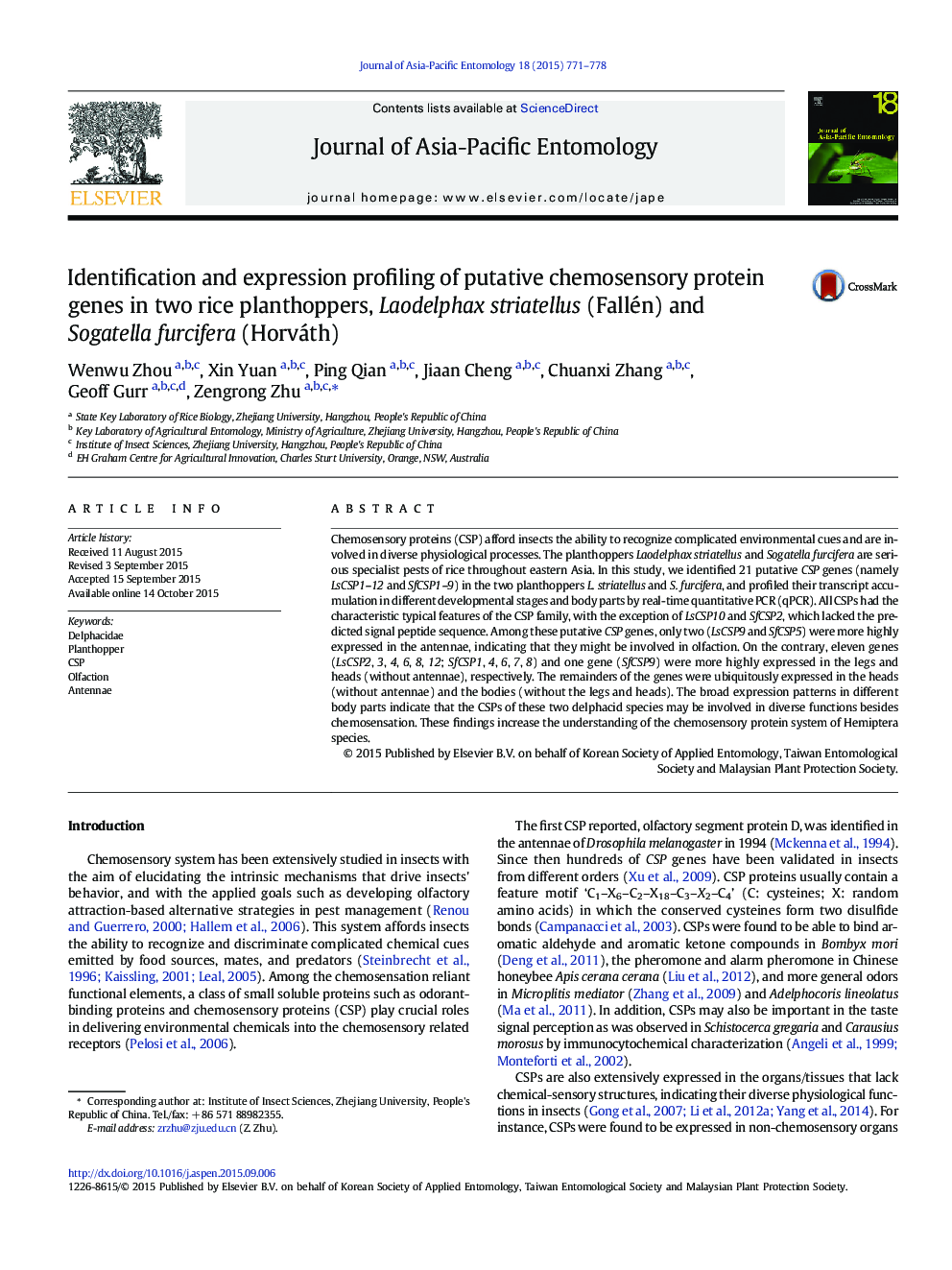| کد مقاله | کد نشریه | سال انتشار | مقاله انگلیسی | نسخه تمام متن |
|---|---|---|---|---|
| 4524401 | 1323576 | 2015 | 8 صفحه PDF | دانلود رایگان |

• 21 CSP genes identified and organ/life-stage expression investigated.
• 11 genes (LsCSP2–4, 6, 8, 12 and SfCSP1, 4, 6–8) were highly expressed in the legs.
• LsCSP9 and SfCSP5 were highly expressed in the antennae.
• LsCSP2-6, 9–12 and SfCSP3, 9 were sex-biased expressed.
Chemosensory proteins (CSP) afford insects the ability to recognize complicated environmental cues and are involved in diverse physiological processes. The planthoppers Laodelphax striatellus and Sogatella furcifera are serious specialist pests of rice throughout eastern Asia. In this study, we identified 21 putative CSP genes (namely LsCSP1–12 and SfCSP1–9) in the two planthoppers L. striatellus and S. furcifera, and profiled their transcript accumulation in different developmental stages and body parts by real-time quantitative PCR (qPCR). All CSPs had the characteristic typical features of the CSP family, with the exception of LsCSP10 and SfCSP2, which lacked the predicted signal peptide sequence. Among these putative CSP genes, only two (LsCSP9 and SfCSP5) were more highly expressed in the antennae, indicating that they might be involved in olfaction. On the contrary, eleven genes (LsCSP2, 3, 4, 6, 8, 12; SfCSP1, 4, 6, 7, 8) and one gene (SfCSP9) were more highly expressed in the legs and heads (without antennae), respectively. The remainders of the genes were ubiquitously expressed in the heads (without antennae) and the bodies (without the legs and heads). The broad expression patterns in different body parts indicate that the CSPs of these two delphacid species may be involved in diverse functions besides chemosensation. These findings increase the understanding of the chemosensory protein system of Hemiptera species.
Figure optionsDownload as PowerPoint slide
Journal: Journal of Asia-Pacific Entomology - Volume 18, Issue 4, December 2015, Pages 771–778